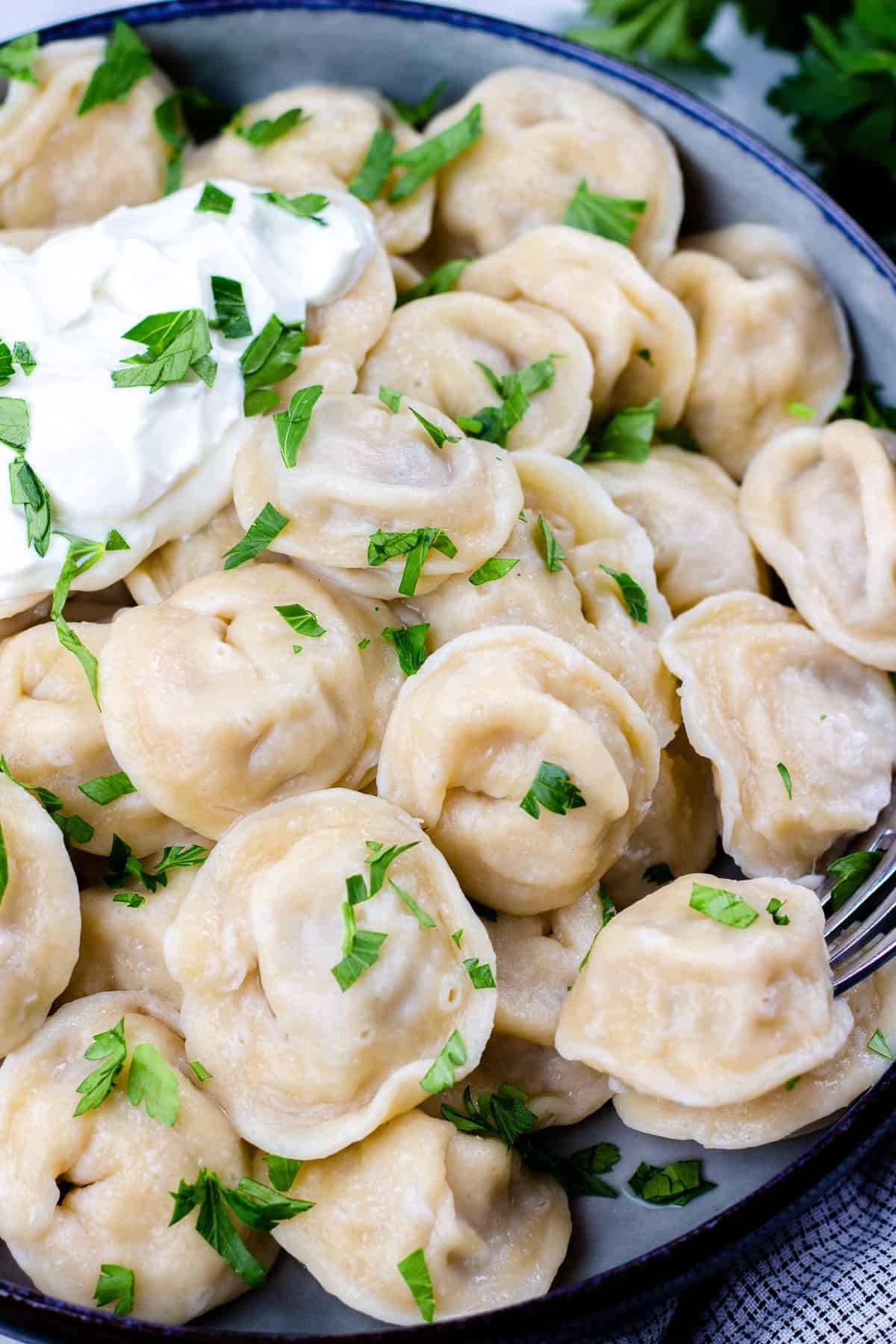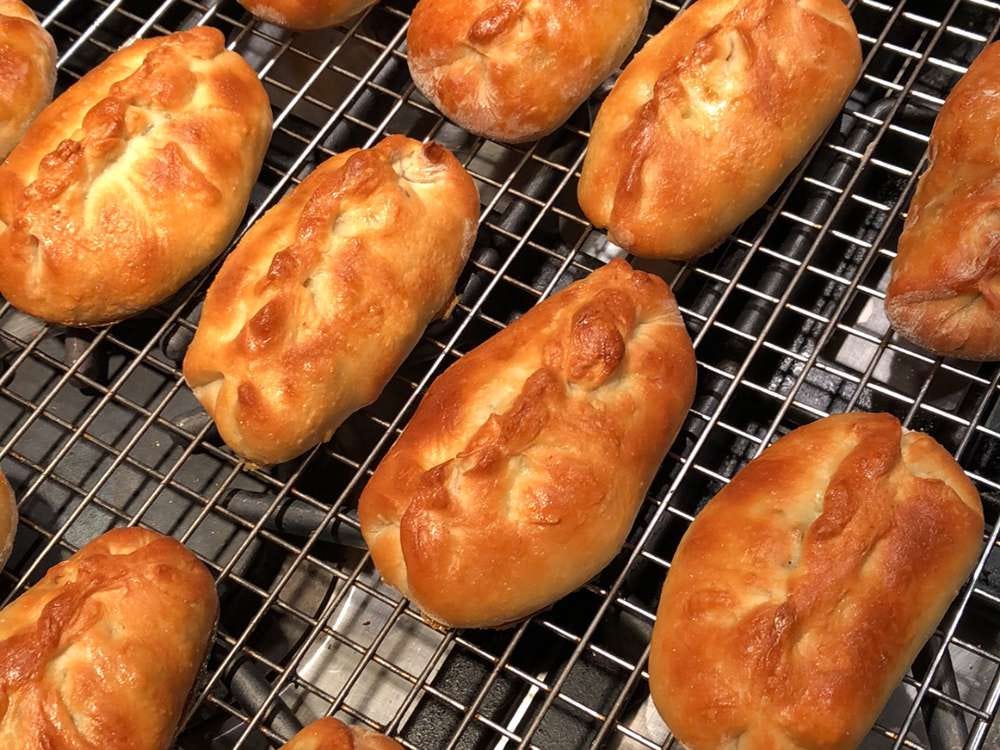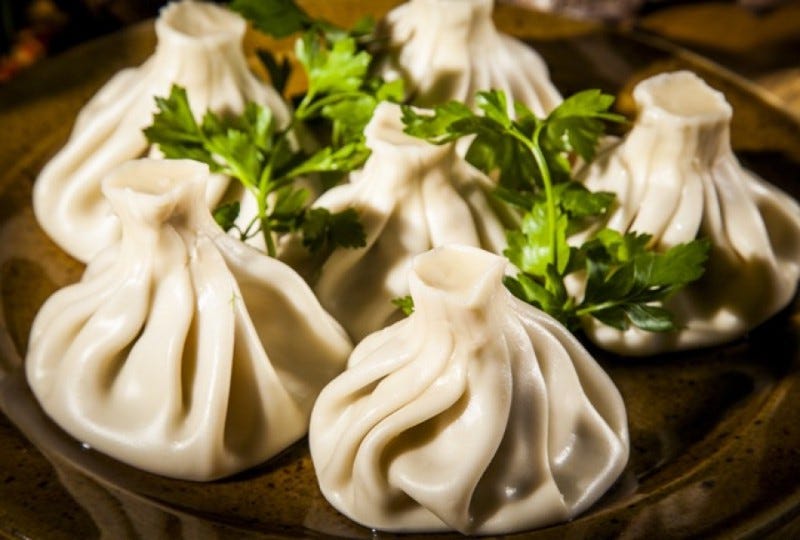Pierogi, Varenyky, Pelmeni, Pedaheh, Piroshki: The Dumplings of Eastern Europe & Russia
We like to call these other dumplings "cousins".
Sometimes when we make a social media post, people stumble upon it and yell at us in the comments, “Those are vareniki/varenyky!” And they’re not completely wrong. It turns out that the word for dumplings (generally!) in Polish is pierogi (duh), and the one in Ukrainian is vareniki. They refer to the same food. Vareniki and pierogi share the same common fillings: cheese, potato and cheese, cabbage, fruits, and sometimes minced meat. In Ukrainian, you might also hear pyrohy, which appears to have been bastardized into the word pedaheh for some Ukrainian families to refer to these same kind of dumplings.

Then, there’s pelmeni. Pelmeni are Russian in origin, have a thinner dough, and are smaller, pinched like little hats. They have the same dough base as pierogi but more closely resemble uszka, another Polish dumpling, filled with mushrooms and often eaten around Christmas and in borscht soup. Pelmeni are most frequently stuffed with minced meat and spices. Since the meat cooks with the dumpling, pelmeni are typically more moist than pierogi.

Lastly, we have piroshki, which sound so similar to pierogi, you might thing they were same, just from a different place. But they are very different! Piroshki are handheld pies, made from yeast-leavened dough (very much unlike pierogi!) and often baked. They can contain similar fillings (meat, mushrooms, cabbage, fruit or compotes, or farmers cheese), but are circular or oval in most cases. It’s like an oversized and baked pierogi on the go…

In addition to these dumplings we just covered, you’ll find so many other relatives in Central and Eastern Europe, like khinkali of George, zlikrofi of Slovenia, kalduny in Belarus or Lithuania, or knedliky of the Czech Republic. What did you call your dumplings growing up?




In my family, we call them "Pedoggies" <3 (which I can hear in the "pyrohy" of piergogi!)